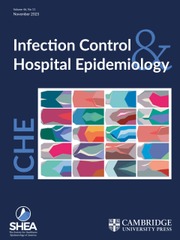No CrossRef data available.
Article contents
Chatting new territory: large language models for infection surveillance from pilot to deployment
Published online by Cambridge University Press: 14 February 2025
Abstract
Rodriguez-Nava et al. present a proof-of-concept study evaluating the use of a secure large language model (LLM) approved for healthcare data for retrospective identification of a specific healthcare-associated infection (HAI)—central line-associated bloodstream infections—from real patient data for the purposes of surveillance.1 This study illustrates a promising direction for how LLMs can, at a minimum, semi-automate or streamline HAI surveillance activities.
Information
- Type
- Commentary
- Information
- Copyright
- © The Author(s), 2025. Published by Cambridge University Press on behalf of The Society for Healthcare Epidemiology of America
References
Rodriguez-Nava, G, Egoryan, G, Goodman, KE, Morgan, DJ, Salinas, JL. Performance of a large language model for identifying central line-associated bloodstream infections (CLABSI) using real clinical notes. Infect Control Hosp Epidemiol 2024 Oct 30:1–4.CrossRefGoogle Scholar
Cool Stuff Now: Epic and Generative AI | Epic. https://www.epic.com/epic/post/cool-stuff-now-epic-and-generative-ai/.Google Scholar
Branch-Elliman, W, Sundermann, AJ, Wiens, J, Shenoy, ES. Leveraging electronic data to expand infection detection beyond traditional settings and definitions (Part II/III). Antimicrob Steward Healthc Epidemiol 2023;3:e27.CrossRefGoogle ScholarPubMed
Yan, LKQ, Niu, Q, Li, M, et al. Large language model benchmarks in medical tasks. Published online December 9, 2024.CrossRefGoogle Scholar


